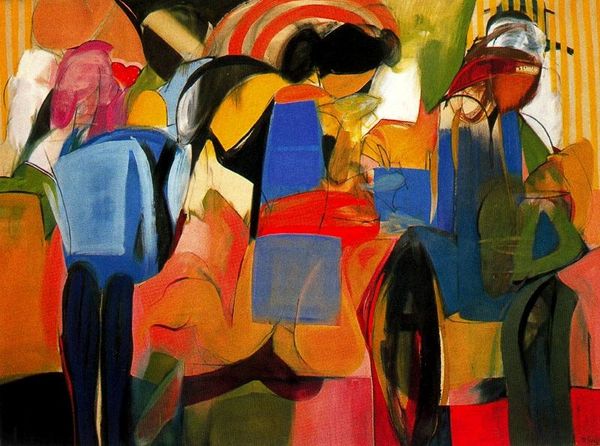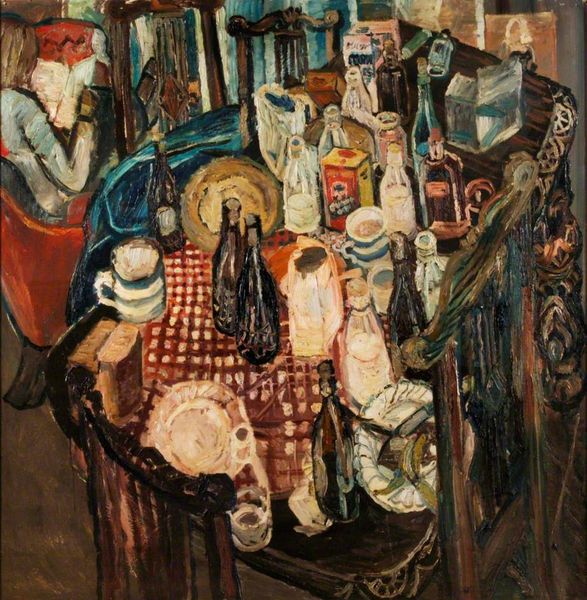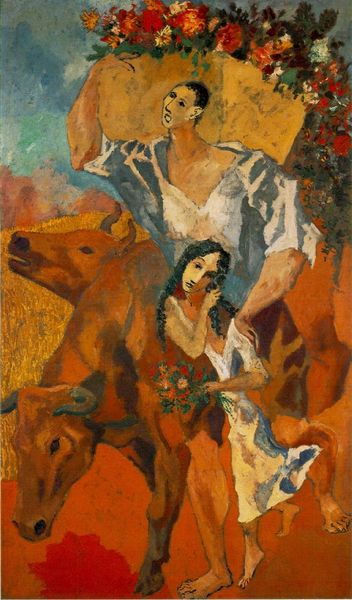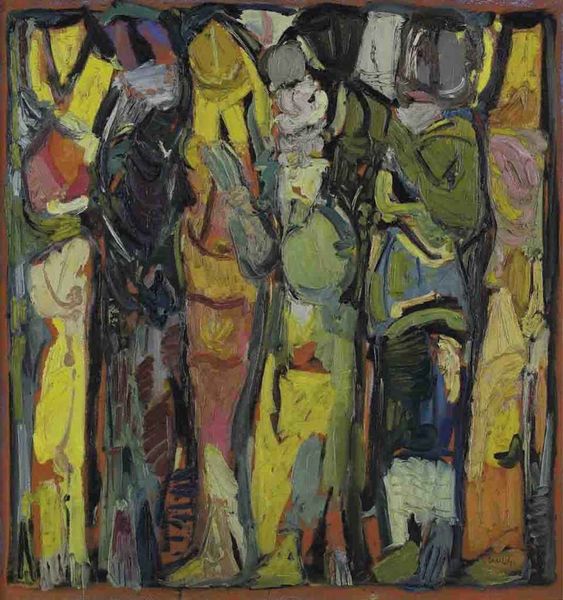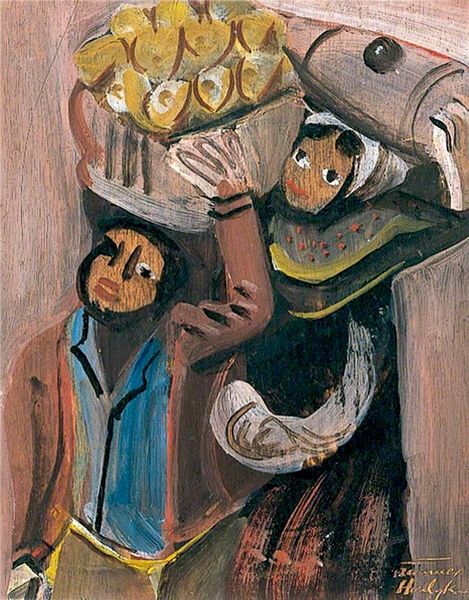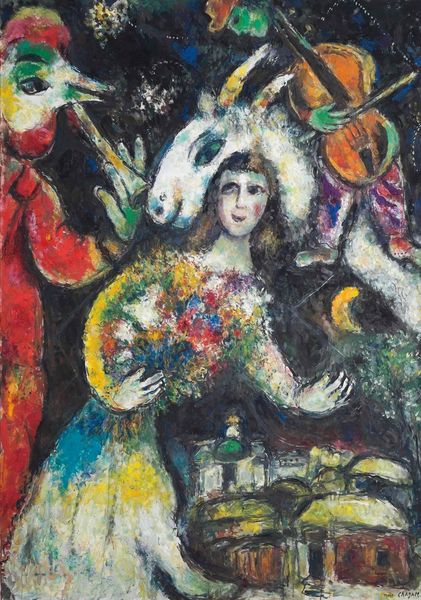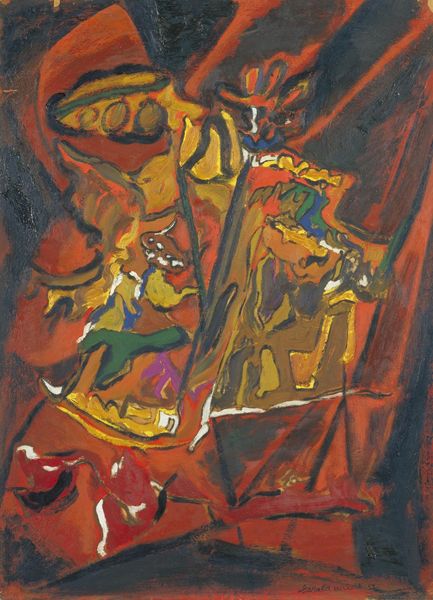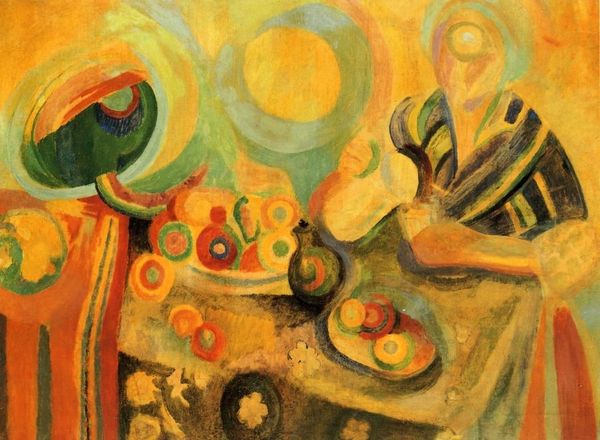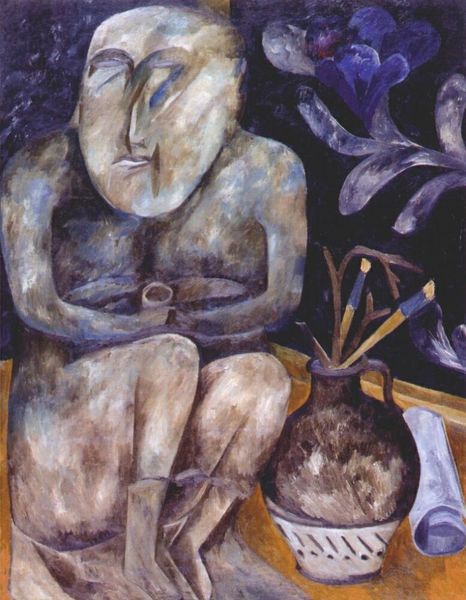
painting, oil-paint
#
portrait
#
cubism
#
painting
#
oil-paint
#
figuration
#
oil painting
#
expressionism
#
russian-avant-garde
#
portrait art
Copyright: Public domain
Curator: This striking oil painting is titled "The Three at the Table" by Pavel Filonov. Editor: It's quite unsettling, actually. The angular forms, the fragmented figures… it all feels rather claustrophobic, doesn’t it? Almost nightmarish. Curator: Indeed. Filonov, deeply rooted in the Russian Avant-Garde, was interested in disrupting traditional modes of representation. The Cubist influence is undeniable here—the breaking down of form into geometric shapes, the simultaneous perspectives... Editor: And that unsettling quality probably reflects the turbulent socio-political atmosphere of Russia at that time. Look at their faces; their features are distorted and somewhat vacant. Were they disoriented by the era or trying to process political tension around them? Curator: A possible and compelling perspective. He was known for his own kind of Cubism and Expressionism. The figures aren't presented as whole entities, but as assemblages of planes and facets, reflecting his idea of "analytical realism"—revealing the inner workings of the world. Editor: So, we’re not just seeing the surface, but all its inner tensions. I notice the elaborate still-life. What should have been an exuberant, joyous scene seems to hold a feeling of intense anxiety. The wine glass lifted high does not suggest celebratory. Curator: Exactly. Notice how Filonov employs the colour palette to achieve tension, using blues and reds to evoke psychological reaction. But this alludes to a complex understanding of class dynamics, considering how the artist, having been raised in poverty, was fascinated by depicting common laborers throughout his life. Editor: Right. As they sit "at the table", is that where the artist saw the people of the moment and the working class? Perhaps these are representative figures in that respect. I think this scene feels more like a last meal, right before a cataclysmic event than a simple gathering. Curator: Ultimately, it's about revealing a deeper, multi-faceted reality beyond surface appearances through both form and subject, challenging viewers to go beyond passive observation. Editor: A reality of fractured hopes, anxious souls, and uneasy gatherings, if I interpret this work correctly. It seems a powerful critique delivered in broken shards.
Comments
No comments
Be the first to comment and join the conversation on the ultimate creative platform.

